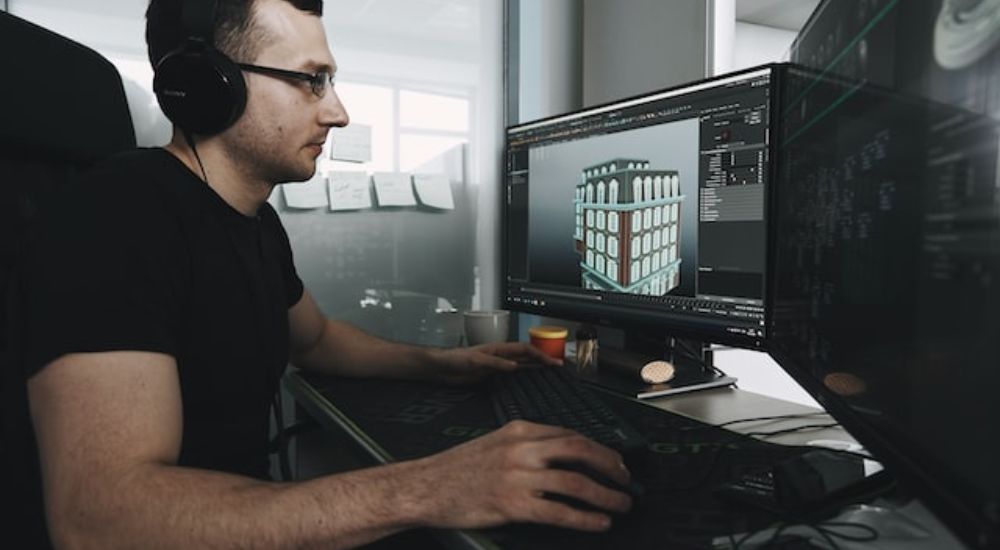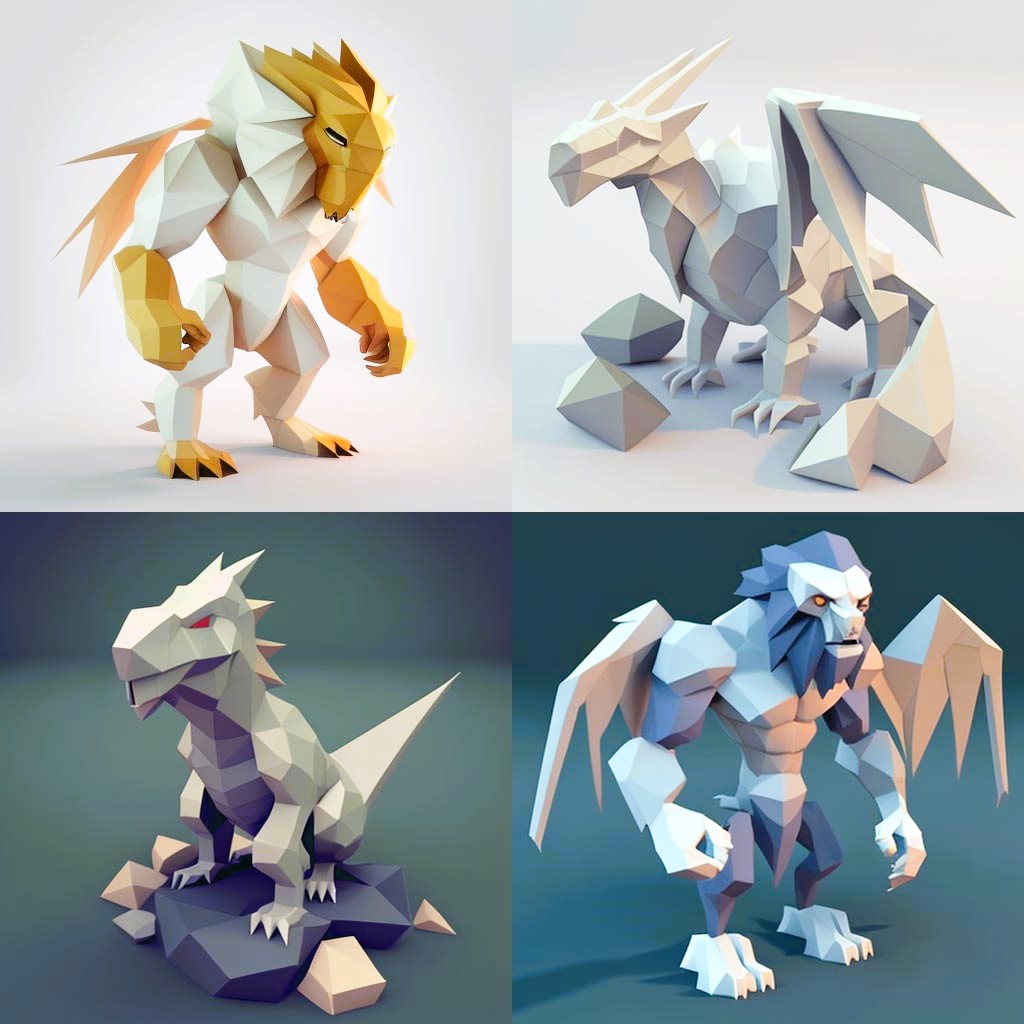Blender, the free and open-source software that has become a household name among 3D artists, is a versatile and powerful toolkit for crafting awesome 3D models, animation, and lifelike simulations.
Whether you’re an aspiring animator, game developer, or someone who’s just experimenting with Blender, this software offers all the tools to bring even your wildest 3D dreams to life. But before you start your adventure into the world of 3D artwork there’s an essential information to know: Blender system requirements.
In this article, we’ll tell you Blender’s minimum requirements as well as its recommended specs, explaining how each component might affect your workflow’s smoothness and render times. Additionally, if you’re on a limited budget, we’re going to tell you what to prioritize depending on your line of work.
Don’t miss out: What is a video game source code?
Blender system requirements: the bare minimum
According to Blender’s website, the minimum system requirements set the foundation for running this amazing software. Let’s look at what they have to say:
- A 64-bit quad-core CPU with support for SSE2: this CPU is the heart of your computer’s processing power. While not top-notch, it’s capable of handling Blender’s core functions, making it a budget, but suitable choice for simpler 3D modeling, animations, and other small-scale projects;
- At least 8GB of RAM: better known as “random access memory”, RAM is crucial for multitasking and handling complex scenes in Blender. While 8GB is ideal for complete beginners, it can quickly become a bottleneck as they advance to bigger projects, like detailed modeling and complex renders;
- A full HD (1920×1080) display: while not a true requirement, having a full HD display is a major convenience. It allows 3D artists to view their work in great detail, which is sufficient for most intents and purposes;
- A GPU (or graphics card) with at least 2GB of VRAM and with OpenGL 4.3 support: the GPU plays a vital role in rendering, especially for previewing your work before committing to a render. These low-end GPUs are well-suited for simpler projects and can help maintain a smooth workflow during modeling;
- Of course, a pointer device (mouse, pen and tablet, or trackpad).
These minimum specs align with what many low-budget gamers have, and such setups might lead to significant slowdowns and massive render times for more complex projects. Now, let’s explore the recommended systems for working with Blender!

Recommended system specs for Blender
Here comes the big beast! The official recommended system specs for Blender are tailored for handling more demanding tasks, and they are as follows:
- A 64-bit CPU with eight cores: this CPU provides way more processing power to handle complex scenes, detailed modeling, and lifelike high-resolution rendering. Despite even the best CPUs struggling with rendering in real time, they are a massive upgrade compared to the minimum setup’s 4-core component;
- At least 32GB of RAM: with this much RAM, your system can comfortably manage multitasking, complex simulations, and working with massive data sets – as long as you’re not using Google Chrome, of course! This memory is essential for high-end 3D modeling and animation work, minimizing those annoying hiccups in the workflow;
- A 2K (2560×1440) display: the higher resolution offers a more productive working environment while also making details easier to work with. We recommend using at least 2 displays to further enhance your multitasking and organizational capabilities;
- A GPU with at least 8GB of VRAM: once again, GPUs with 8GB of VRAM are usually much more powerful than their 2GB counterparts. With these monsters, render times are vastly reduced, ensuring even your high-resolution projects maintain a decent performance level. They are a must-have for professionals working on large-scale and resource-intensive projects, like 3D modeling for blockbuster movies and realistic AAA games;
- A mouse with multiple buttons for convenience or a pen and tablet.
While this setup can cost many times as much as the minimum configuration, it’s like having a supercharged workstation for 3D artists. It’s a big investment that lets them tackle high-end projects with minimal performance hiccups.
Hardware considerations for each Blender feature: how powerful should your computer be?
When it comes to 3D work in Blender, one size certainly doesn’t fit all: different 3D pipelines have widely varying performance needs. Let’s talk a bit more about Blender’s many features and their hardware requirements:
High-poly modeling and sculpting
Two of the cornerstones of 3D artwork, high-poly modeling and sculpting, are everywhere you look. Be it a highly anticipated video game like Hogwarts Legacy or a movie like Guardians of the Galaxy Vol. 3, you are sure to find them.
This line of work often requires a powerful machine to avoid major hiccups, with a CPU with great single-core performance being the most critical component. That said, don’t skip on the GPU, which is responsible for calculating the model’s shadows and highlights in the preview. If you want to be extra sure, go above and beyond Blender’s recommended specs, but even those should be enough for most intents and purposes.
Low-poly modeling
As their name implies, these artists work with 3D models with a low number of polygons, which aren’t demanding at all under most circumstances. These models often come with a unique and stylized look that is sure to charm most players.
For working with them, even the minimum system requirements will suffice. Unlike their high-poly counterparts, low-poly artists often work with polygon counts in the low hundreds, which makes everything much easier for the computer.

Animating and rigging
Animating and rigging 3D models can be a computationally intensive process. Ensuring a smooth viewport performance is a must, as this is how you’ll see how everything will move in real time.
This process is highly dependent on the CPU’s single-core performance, much like high-poly modeling and sculpting. In other words, you’ll need a beefy computer to effectively work with 3D animations and rigs.
Rendering
Rendering high-quality images and animations in Blender is a computationally expensive task. The software comes with two primary rendering engines: Eevee, which relies on the CPU and pairs nicely with real-time visualization, and Cycles, which leverages the full power of your GPU to generate photorealistic images and animations.
Either way, look into a machine with the recommended specs. Keep in mind you can always look for a render farm like Rebusfarm, which distributes the workload across multiple machines, to significantly accelerate your rendering pipeline.
Physics simulations
Physics simulations, like fluid, cloth, or soft-body simulations, involve an extreme amount of calculations, which must be made in quick succession. A CPU with a high core count and fast clock speeds can significantly accelerate these simulations, reducing the time required for previewing and finalizing physics-based effects.
Depending on the complexity of your simulation, even Blender’s recommended hardware specs will put in lots of blood, toil, tears, and sweat. If you can spare the money, don’t be afraid to invest in a top-notch CPU like Intel’s i9-13900K or AMD’s Ryzen 9 7950X – it will be worth it.

Texturing and shading
The hardware requirements for texturing and shading in Blender vary depending on the complexity of your project. Textures with high resolutions will demand more powerful computers and rely heavily on the CPU’s single-core performance. Shading, on the other hand, depends on the render engine you choose, so it’s tied to your rendering considerations.
Simpler projects, like low-poly models, will likely do fine on minimum specs, but aim for the recommended ones as much as you can.
Closing thoughts
All in all, Blender system requirements can vary a lot depending on your line of work. From the basics that get you started with low-poly modeling and simpler tasks to the recommended specs that take your 3D projects to the highest level, understanding Blender’s hardware requirements is essential.
Whether you’re modeling, sculpting, texturing, rendering, or animating, the right hardware can make your creative journey smoother and more enjoyable.
Get started with Main Leaf today!
Speaking of creativity, if game development is your passion, Main Leaf is your trusted partner in Unity and Unreal Engine game development! Our team of experts is ready to help you turn your fantastic visions into reality, providing a custom-tailored solution for your needs. From its concept to its release, we’ve got you covered for the entire journey.
Remember: your game, your rules, your success, and it’s all within reach with our extensive game development experience. Contact us below to explore your possibilities!

